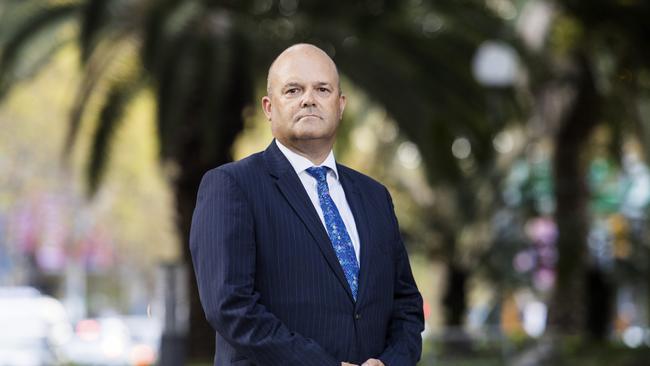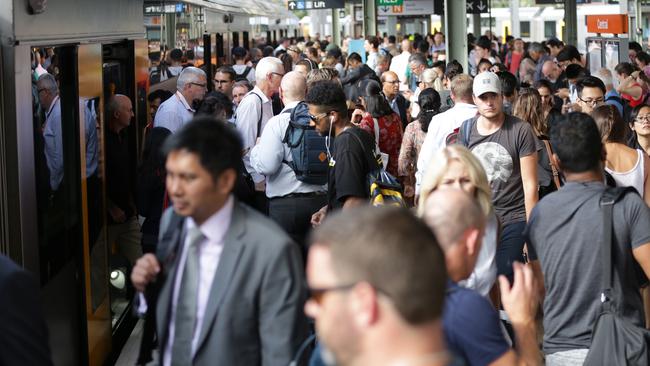Infrastructure blueprint to fix our choked cities
The infrastructure tsar has warned that population growth could cripple capital cities and consign them to a future of congestion.

The nation’s infrastructure tsar has warned that population growth would cripple Australia’s capital cities and consign them to a future of congestion unless federal and state governments radically improve the way they plan and deliver major road and rail projects.
Infrastructure Australia chief executive Philip Davies has also issued a clarion call to both major political parties to resist ill-planned infrastructure commitments before this weekend’s by-elections or risk burdening taxpayers with costly, pointless projects.
In an exclusive interview with The Australian, Mr Davies, who will retire from his position at the end of this month, slated successive governments for “gold-plating” infrastructure projects without sound business cases and being unaccountable to taxpayers on costs.
As the Turnbull government prepares a population policy, with Australia poised to reach 25 million people next month, Mr Davies said if planning for major projects did not change at all levels of government, the major capitals would not cope with the population growth.
“An additional 11.8 million people will call Australia home in the next 30 years, with the bulk of this growth occurring in our largest cities — Sydney, Melbourne, Brisbane and Perth,” Mr Davies said.
“The reality is, if we don’t improve the way we plan and deliver our infrastructure, we won’t cope with this growth and our cities will be characterised by congestion and constraint.
“We need to have the right long-term planning and supporting infrastructure in place, and that begins with ensuring that decisions on public infrastructure projects are robust, transparent and accountable.”
Issuing an extraordinary caution to the major parties, he urged governments to stop putting populist politics ahead of public benefit and strategic planning.
“There are few more dangerous places to stand than between a politician and an infrastructure announcement,” Mr Davies writes in The Australian today.
“With Super Saturday by-elections approaching this weekend and federal and state elections on the horizon, governments and oppositions must resist the urge to commit funding to projects before the appropriate planning and assessment has been done.
“Across the nation, governments at all levels need to be more disciplined in doing their homework on proper infrastructure planning.”

Mr Davies writes that too often projects are committed to before a business case has been prepared, a full set of options have been considered and rigorous analysis of a potential project’s benefits and costs has been undertaken.
“Of course, governments and oppositions can still rightly propose infrastructure priorities to their constituents,” he writes.
“But where this happens, project funding must be conditional on identifying the best solution through a proper business case. Without this analysis, there is a real risk of committing to the wrong projects or gold-plated projects, and we deny vital funding to other, worthier investments.”
IA will today release a set of guidelines for future infrastructure projects designed to lift government works to the same level of accountability, planning and cost rigour as the private sector.
The principles include release of a business case for public scrutiny, post-completion reviews, consideration of different funding options and rigorous analysis of the “likely economic, social and environmental impacts of a potential project prior to a funding announcement”.
In Australia there were no post-completion reviews of projects undertaken to assess the project’s benefit and delivery.

Mr Davies said there had been a recent and “material” improvement in the quality of business cases. He cited the western Sydney airport project, which has an independent corporate management structure, as an example of best-practice infrastructure. He also praised the federal government’s $250 million budget allocation for the development of high-quality business-case assessments for infrastructure projects.
When asked if he could cite a project that had stacked up to the 11 principles outlined in the document to be published today, Mr Davies said to date there had been none that had adhered to the best-practice model.
He said that the principles should be incorporated into the national partnership agreements between the commonwealth and the states, which would make funding for projects contingent on the state and territory governments signing up to them.



